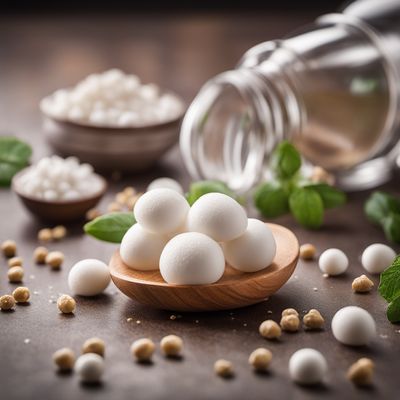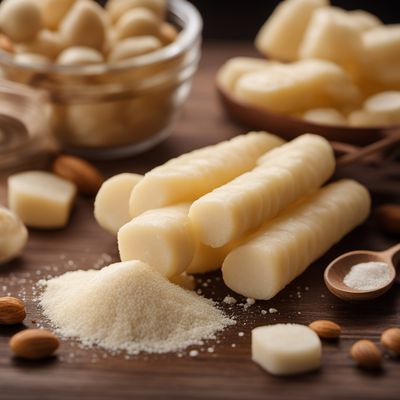
Ingredient
Polyols
The Sweet Side of Sugar Alcohols
Polyols are a type of carbohydrate that provide sweetness without the high calorie content of regular sugar. They have a similar taste to sugar but with a slightly cooling effect and can be found in sugar-free candies, chewing gum, and diabetic-friendly products. Polyols are slowly absorbed by the body, making them a suitable option for individuals with diabetes or those watching their sugar intake.
Origins and history
Polyols have been used as sweeteners for centuries, with early records of their use dating back to ancient China. They are naturally found in certain fruits and vegetables, such as apples, pears, and mushrooms. Today, polyols are commercially produced through a process that involves hydrogenation of sugars. They are widely used in the food industry as a sugar substitute due to their low calorie content and ability to provide sweetness without causing a rapid increase in blood sugar levels.
Nutritional information
Polyols are low in calories and have a lower glycemic index compared to regular sugar, making them suitable for individuals with diabetes or those following a low-calorie diet. They also do not promote tooth decay like regular sugar does.
Allergens
Polyols may cause digestive discomfort, such as bloating or diarrhea, in some individuals when consumed in large amounts. It is recommended to consume them in moderation and gradually increase intake to allow the body to adjust.
How to select
When selecting polyols, look for products that clearly state the type and amount of polyol used. Opt for reputable brands that have undergone quality testing and certification. Additionally, check the ingredient list for other potential allergens or additives that may be present in the product.
Storage recommendations
Polyols should be stored in a cool, dry place away from direct sunlight. Keep them tightly sealed to prevent moisture absorption, which can affect their texture and quality. Avoid storing polyols near strong-smelling substances as they can absorb odors easily.
How to produce
Polyols are not produced by individuals at home as they require specialized equipment and processes. They are typically produced on an industrial scale by food manufacturers.
Preparation tips
Polyols can be used as a sugar substitute in a variety of recipes, including baked goods, beverages, and desserts. When using polyols in baking, it is important to note that they do not provide the same structure and browning effects as sugar. Adjustments to the recipe may be necessary to achieve the desired texture and appearance. Additionally, polyols can be used to sweeten beverages, such as coffee or tea, and can be added to sauces or dressings for a touch of sweetness.
Culinary uses
Polyols are commonly used in sugar-free candies, chewing gum, diabetic-friendly products, and low-calorie desserts. They are also used in some pharmaceutical products, such as cough syrups and throat lozenges, to provide a sweet taste without the use of sugar.
Availability
Polyols are widely available in grocery stores, supermarkets, and health food stores worldwide.
More ingredients from this category

Xylitol
The Sweet Tooth's Ally

Sorbitol
Sweetener with a Twist

Other polyols
The Sweet Side of Sugar Substitutes: Exploring Other Polyols

Lactitol
"The Sweet Secret: Exploring the Versatility of Lactitol"

Maltitol
The Sweet Secret: Maltitol

Mannitol
The Sweet Alcoholic Sugar

Erythritol
Natural Sugar Substitute

Isomalt
The Sweet Secret: Isomalt